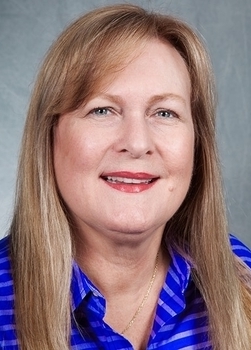Many people wonder how leaders emerge. Some people endorse the view that certain people are “born leaders,” while others believe leadership is a skill that is acquired. Organizational psychologists have studied leaders, leadership, and leadership styles for decades to determine what traits separate effective leaders from leaders who lack effectiveness, the situations in which leadership occurs, and more. (Having taught Industrial/Organizational Psychology at both the undergraduate and graduate level, I am familiar with the research in this area.) In addition to its applicability in workplace settings, an understanding of leadership is an integral part of jury selection strategy. Many attorneys incorrectly believe that the jury foreperson is the leader of a jury while, in fact, the foreperson often plays a minor role in the jury’s decision making process. The opinion leader, who may or may not be the jury foreperson, is actually the person who leads the jury toward its group decision, the verdict. There are several leadership styles, with some leaders varying their style depending on the situation and others tending to prefer one style over others. Many years ago, organizational psychologists devised a theory of leadership based on the source of the leader’s power, defining power as the ability of one person to influence others. These power bases are:
(1) reward power, which is influencing others by providing something they desire, such as salary raises, promotions, etc.;
(2) coercive power, defined as relying on threats and punishment and requiring constant monitoring to ensure compliance;
(3) legitimate power, which refers to the right of a leader to command, such as the power of one’s supervisor, a police officer, a physician, etc.;
(4) referent power, defined as providing an example that others want to follow, such as a hard working boss whose employees want to emulate in order to succeed; and
(5) expert power, which is derived from the possession of knowledge that others do not share.
Leaders can be classified in terms of how they use their power to influence other people. Authoritarian leaders take charge of the situation, make decisions unilaterally, and expect acquiescence. An authoritarian leader on a jury rarely listens to others’ opinions, having already decided the case for himself or herself, and is often responsible for a “hung jury.” Democratic leaders, in contrast, survey their colleagues’, subordinates’, or fellow jurors’ opinions, with the goal of reaching common ground in the group. Finally, leaders who adopt a laissez-faire style of leadership do not manage others; instead, they let their subordinates manage themselves. Needless to say, laissez-faire leaders are usually ineffective. For example, in a jury situation, it would be difficult for a verdict to be reached under the leadership of someone who refused to lead the group. Most leaders, of course, use varying styles and apply different power bases depending on the situation in which they are leading the group. Understanding leaders and leadership can help the attorney select the best possible group of jurors for his/her case.
I often learn new things in reading what Melissa has written. As someone whose graduate work was in the Organizational Behavior field (the business school version of I/O psychology), leadership is a familiar topic. But, considering her perspective on how leadership plays out in the jury decision making process is enlightening. Melissa is the expert at Magnus on both leadership and jury behavior. But, it is interesting to me to consider the leadership question. I know from Melissa’s work that there are at least two important factors attorneys should learn in this regard. First, that a jury is a group. This sounds obvious, but when selecting individual jurors, it is important to consider how they will work as a group, not as individuals (unless you want a hung jury). And, second, from observing many mock juries, a group leader will emerge, and that, as Melissa points out, it may not be the foreperson. The foreperson may simply be the facilitator or note taker while someone else takes subtle, or not so subtle, control of the deliberations. This person, the opinion leader, is often someone other than the person who volunteers, is drafted or otherwise elected to be the foreperson. And, the opinion leader may tactfully direct the conversation in the direction he/she wants it to go. Sometimes, the opinion leader (or foreperson) is not very tactful, but most often, they try to be inclusive of others’ perspectives. Considering the opinion leader as a leader with various characteristics described above is helpful. An opinion leader/foreperson does not have much reward power, nor do they have much coercive power. These power bases are not strong in a jury deliberations setting as compared to, for example, a workplace. They may, however, possess legitimate power as conveyed on them by the other jurors, especially if the opinion leader and foreperson are one and the same. They may also have referent power, for example, when the opinion leader/foreperson is perceived as having a higher status than the rest of the jurors. Perhaps this would be due to that person’s job status, education, age, or other factors that may give them a status advantage. And, a opinion leader/foreperson may have some expert power, for example, some expertise in the area of the litigation (to whatever degree – a topic that may be the source of another post sometime). Being aware of these factors can inform the attorney during jury selection and should help result in more favorable outcomes if leadership is considered when selecting/de-selecting potential trial jurors.



Comments are closed.